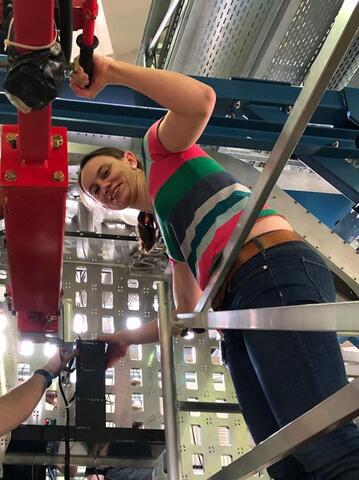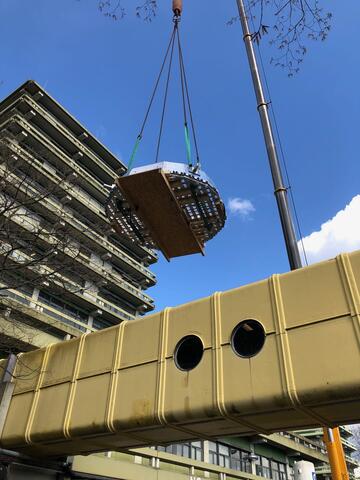Workshop „Physics Opportunities with Proton Beams at SIS100” was held in Wuppertal
PANDA meetings
04/03-08/03 2024 CM 24/1 in Münster
24/06-28/06 2024 CM 24/2 at GSI
25/06-26/06 2024 FEE/DAQ Workshop
04/11-06/11 2024 CM 24/3 at GSI
05/03-07/03 2025 WS at GSI
16/06-20/06 2025 CM 25 in Uppsala
This report concerns a detection module used for a pellet tracking system. Spheres of frozen hydrogen known as pellets can be used as internal targets in hadron physics experiments. Pellets are created some distance above the accelerator beam and directed in a pellet beam pipe to intersect the accelerator beam. To determine the position of a pellet in the interaction region in the case of an interaction, the pellets need to be tracked. This is done using tracking sections along the pellet beam pipe with measurement levels containing lasers illuminating the pellets and cameras, detecting the light. The pellet position in the interaction region can be reconstructed with an accuracy of 0.1 mm. To reach this accuracy there are high demands on the alignment of the cameras and lasers. Alignment by a pellet beam pipe is generally difficult so a solution enabling alignment elsewhere is desired. Therefore a detection module consisting of a plate with cameras and lasers mounted to it has been constructed. These cameras and lasers can be aligned in an alignment bench setup before being transported to a pellet beam pipe. The alignment of the cameras and lasers on the detection module must be maintained under certain conditions e.g. transportation, temperature changes, exposure to vibrations. This report covers investigations regarding the mechanical stability of the detection module under these conditions. Different alignment bench targets are investigated. The effects of the optics of the cameras and lasers and the functionality of the detection module are investigated.





